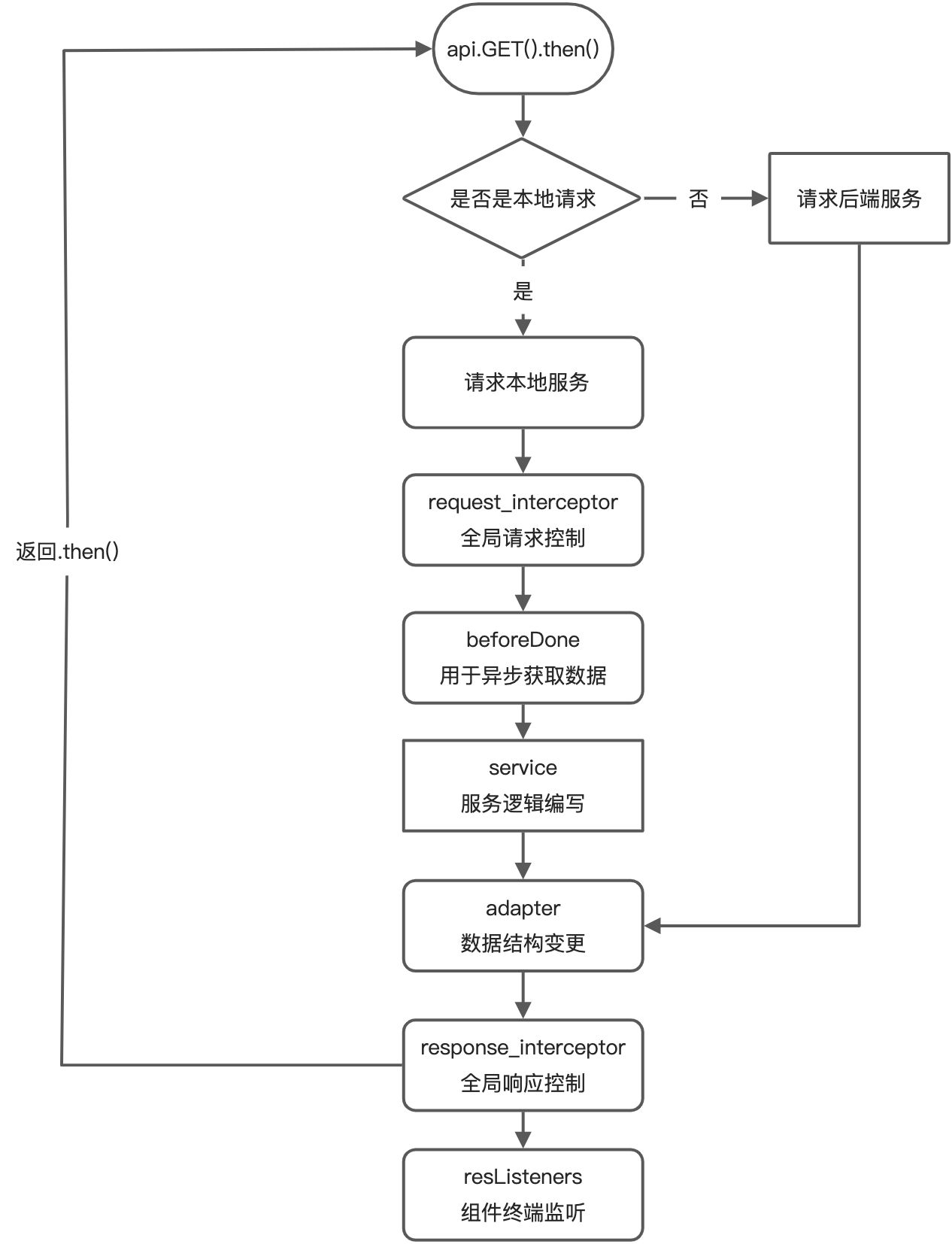axios-rest-manager
v1.0.5
Published
The Axios-REST is a Class wrap by REST-style onto Axios, it has a lot of functions to control network for browser, example download、upload、big file upload、auth、local service、api manage and so on.
Downloads
22
Readme
介绍
Axios-REST是一个无侵入式REST风格的API请求框架,其底层依赖axios以及对浏览器XMLHttpRequest对象或者ActiveXObject对象的重写,意味着某些高级功能只能够在浏览器环境下使用,该框架是在Axios基础上的封装,其设计的目的是为了使REST风格的API变得易复用、易管理、更轻松的与后端接通,与此同时将一些常用的接口功能封装起来例如:上传文件、下载文件、webWorker动态创建; Axios-REST能够极大简化数据传入前端组件前的过程(包括获取后端数据-数据转换)。
INSTALL
npm install axios-rest-manager
REST风格
API接口是一种标准,这是该框架封装的基本原理,通常来说REST风格定义了URL路径合理的设计方式,现在先简单看看Axios-REST所理解的REST风格API应该是怎样的。
URL设计
首先URL是一种获取资源的地址,因此URL设计的根本是讨论资源的存储与分配规则。
资源是文件,资源存储的地方是文件夹,文件夹是存放在机器上

BaseURL
需不需要在最后加斜杠? 我们一般规定http://sitechecker.pro/这是定位到sitechecker.pro这个机器的根目录,根目录也算做PATH的一部分,因此在配置全局的baseURL时就不必去定义path部分,当然大家的习惯未必一样,因此在框架里兼容了这样的情况。
Path

以一个日志资源的操作的接口为例,这个接口的意思就可以解读为,对ODMS系统的log模块的ID为12343的日志进行run_log操作。
补充一些简单知识:
- 端口:在一些非局域网的场景中,为了网络安全,机器对外只会默认开放80端口来接收外来http请求;
- path1:因为只有一个端口,所以需要使用nginx来分发请求,REST风格约定path1是作为系统标识符,标识该链接是属于哪个系统;
- path2:通常表示改系统上的资源类型,例如:获取用户数据user_info,获取商品数据shop_store等;
- path3:可以是资源的ID、资源名,个性化操作等,如果path3为资源标识则【可能】需要添加path4标识个性化操作。 当然以上都只是一种API定义风格的理解,市面上不同的框架有不同的接口风格,Axios-REST支持任何一种path的定义,但能遵循这样的Path可以是Axios-REST发挥最大功能。
Methods
- GET请求表示了获取资源
- POST请求表示创建资源
- PUT请求表示修改资源,必须带ID
- PATCH请求表示修改资源中的一个字段,必须带ID
- DELTE请求表示删除资源,必须带ID 注意:因为修改资源必然需要知道修改那个资源,因此PUT,PATCH,DELETE请求必需要带上资源ID
Query String
通常我们不会过多的限制queryString,自由度较高,但是比较常见的问题是
- 传Array,如果是GET请求,一般转换成以逗号分割的字符串。
- 传Object, 这个场景通常出现在非GET,DELETE请求中,注意不要在Object中嵌套JSON,因为浏览器会先JSON化对象,这会给嵌套在对象中的JSON字符串的引号加上斜杠,导致后端取到之后无法反序列化该JSON数据。
快速开始
由于是在Axios之上封装的框架,因此很多用法同Axios相似,类型也能够借鉴Axios类型。
定义api
import { AxiosError, AxiosRequestConfig, AxiosResponse } from "axios";
import Api from "~/components/Axios/AxiosApi";
// 获取全局配置对象API
const Api = new Api('https://localhost:8080')//BaseURL
// 设置通用请求头
const config: AxiosRequestConfig = {
headers: {
'Content-type': 'application/json'
}
}
const api = Api.createApi(config) //获取api类
//https://localhost:8080/local/test/
export let simpleUrl = new api('local', 'test')
//使用资源占位符#
//https://localhost:8080/dbdata/database/1234321/dashboard/table_size
export let complexUrl=new api('dbdata','database','#','dashboard','table_size')
export default Api
发起请求
import {simpleUrl} from './api'
/*
用于应对:https://localhost:8080/local/test/
*/
simpleUrl.GET({value:'hello'}).then(res=>{})
simpleUrl.POST({value:'hello'}).then(res=>{})
/*
用于应对:https://localhost:8080/local/test/123432/
*/
let id = '123432'
simpleUrl.PUT({value:'world'},id).then(res=>{})
simpleUrl.PATCH({value:'world'},id).then(res=>{})
simpleUrl.DELETE(id).then(res=>{})
/*
用于应对:https://localhost:8080/local/test/123432/run_log
*/
let action = 'run_log'
simpleUrl.GET({},id,action).then(res=>{})
simpleUrl.POST({},id,action).then(res=>{})
id占位符号
通常我们会使用标准API,如果没有特殊情况id参数默认会放到链接的最后一位,但是也有一些复杂情况,可以使用占位符号#来替代未来传入的id值
import {complexUrl} from './api'
let complexUrl=new api('dbdata','database','#','dashboard','table_size')
// https://localhost:8080/dbdata/database/1234321/dashboard/table_size?value=hello
complexUrl.GET({value:'hello'},'1234321').then(res=>{})
//https://localhost:8080/dbdata/database/1234321/dashboard/table_size
//body:"{value:"hello"}"
complexUrl.POST({value:'hello'},'1234321').then(res=>{})##进阶功能
下载功能
Axios-REST针对下载场景进行了封装
下载Excel
let getExcel= new api('database','excel')
getExcel.GET_EXCEL({page:2}).then(res=>{
// 如果res.data就是Excel的数据流就这样做
getExcel.DOWNLOAD_EXCEL(res)
// 如果res.data.data才是Excel的数据流就这样做,其他情况也如此
getExcel.DOWNLOAD_EXCEL(res,res.data.data)
// 下载的文件名有请求头'content-disposition'来控制
})A链接下载1
let getSomeLink= new api('database','download')
<div onclick="getSomeLink.DONWLOAD('filename','http://xxxxxx')"></div>
A链接下载2
let getSomeLink= new api('database','download')
getSomeLink.GET().then(res=>{
})
<a onclick="getSomeLink.DONWLOAD('filename','http://xxxxxx')"></a>设置拦截器
通常用于全局的请求与响应前的工作例如:请求头的操作,请求的用户token,报错代码的统一处理,
import Api from './api'
Api.setRequestInterceptors((req: AxiosRequestConfig) => {
//do something
return req
}, (err: AxiosError) => {
return Promise.reject(err)
})
Api.setResponseInterceptors((res: AxiosRequestConfig) => {
return res
}, (err: AxiosError, response: AxiosResponse) => {
if (response?.status === 401) {
console.log('401', response.data.detail)
}
err.response = response;
return err
})进阶功能
数据接口Adapt
数据接口允许注册一个函数,在终端收到返回值之前将调用,终端会收到函数的返回值,注意这是一个同步函数不能在其中进行异步调用
//例如这样一个场景,我们请求来的数据为x和y的,但是组件中需要将名称改为xAxis,yAxis,这样的场景
//推荐使用adapt来操作
api.runOrderSwitch.setAdapter('GET', (res) => {
console.log(res)
res.data.results['xAxis'] = res.data.results['x']
res.data.results['yAxis'] = res.data.results['y']
return res
})模拟本地服务
setService支持异步请求
import Api, {getChartsData} from './api'
//开启/关闭全局设置的localService,必须单个服务与全局服务同时开启,单个服务才能生效
Api.local_servers_on(true)
// 模拟一个后端服务,拦截请求并返回数据
//setService,在数据返回之前能够异步调用一些数据,setService内可以进行异步调用,resolve返回成功数据,reject返回失败数据,
//注意返回数据的格式,status为响应码,response的值是返回的内容
getChartsData.setService('GET', (req,resolve,reject) => {
setTimeout(() => {
resolve({status:201, response: {msg:'this is a message'} })
}, 5000);
})webWorker
可以方便的动态设置webworker函数,同时像获取普通服务数据一样获取计算值
import {some_api} from './api'
// 当某个接口调用并返回时可以获取到返回值
some_api.setWebworker(function () {
onmessage = ({ data: { jobId, message } }) => {
console.log('i am receive message is:-----', message);
console.log('i am receive jobId is:=====', jobId)
postMessage({ jobId, result: {msg:'this is a message'} });
};
})
some_api.GET_WORKER({ hello: 'world' }).then((res:any)=>{
console.log('fina_get',res)
})请求全流程
注意所有圆角矩形是都是可以省略,而矩形框不能省略

